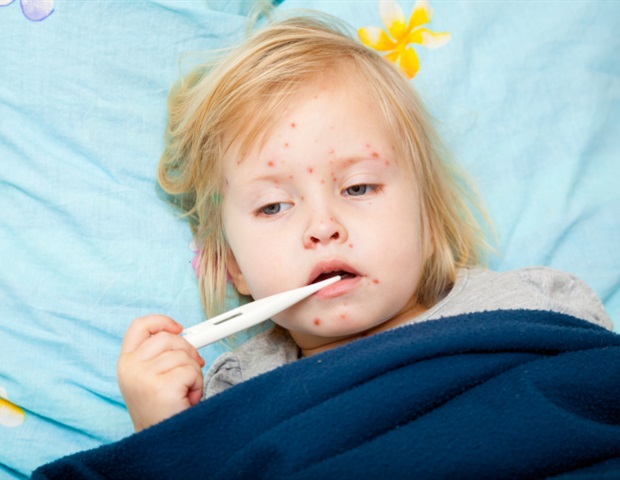This post: The Scary Truth About Teen Eating Disorders Every Parent Should Know
Co-written by: Marybeth Bock & Nancy Reynolds
Uplifting messages about body positivity and total acceptance of your body size and shape seem to be everywhere these days.
“Feeling beautiful has nothing to do with what you look like, I promise.” ~ Emma Watson
“Change the shape of your mind, not the shape of your body.” ~ Chikari Collective
“I’m never going to starve myself for a part. I don’t want little girls to be like, ‘Oh, I want to look like Katniss, so I’m going to skip dinner.’” ~ Jennifer Lawrence
“You have to stand up and say, ‘There’s nothing wrong with me or my shape or who I am, you’re the one with the problem!’” ~ Jennifer Lopez
With all that positive messaging flooding television commercials, the covers of magazines, social media, and the celebrity circuit, it’s easy to believe our teens couldn’t possibly be pressured into idealizing or mimicking the super skinny look that our generation referred to as the “idyllic” body image growing up. And, it’s hard to believe they’d ever be hyper-focused on their weight or that they could fall into the body comparison trap and develop an eating disorder, right?
Well, not so fast…
The Scary Truth About Teen Eating Disorders Every Parent Should Know

According to Healthline, the number of teens (girls especially) who visited the ER for eating disorders nearly doubled during the pandemic.
“Eating disorders can develop anytime. But when you add COVID stress and uncertainty to the mix, the combination can be disastrous,” said Allison Chase, Ph.D., an eating disorder specialist and clinical psychologist with Eating Recovery Center.
But COVID isn’t totally to blame for the rise in teen eating disorders. In fact, according to Chase, eating disorders were on the rise even before the pandemic. “In less than a decade, the rate of eating disorders has risen by 119 percent in kids under 12. Anorexia is now the third most common chronic illness among adolescents, after asthma and obesity,” said Chase.
Other statistics are equally as alarming:
- 30 million people in the U.S. have an eating disorder.
- 95% of people with eating disorders are between the ages of 12 and 25.
- Eating disorders have the HIGHEST risk of death of any mental illness.
- Each decade since 1930, the number of anorexia nervosa cases among young women ages 15 to 19 has increased.
- For females between 15 and 24 years old who suffer from anorexia nervosa, the mortality rate associated with the illness is 12 times higher than the death rate of all other causes of death.
- Every 62 minutes, at least one person dies from complications related to their eating disorder, according to the National Association of Anorexia Nervosa and Associated Disorders (ANAD) statistics.
- Males make up 25% of people with anorexia. Because they are often diagnosed later than females, they are at higher risk of dying.
What Causes Eating Disorders?
Experts have found that no single cause for eating disorders has been established. However, a preoccupation with body weight and shape is central to most eating disorders.
They found that eating disorders can be associated with, but not necessarily caused by a myriad of different factors which may be genetic, cultural, social, behavioral, psychological, or biological.
Teens with low self-esteem, a history of trauma, difficulty managing stress, or having a close relative with an eating disorder are also more prone to developing eating disorders.
And, teens involved in sports that place emphasis on physical fitness or leanness, such as swimming, wrestling, gymnastics, or cheerleading, for instance, may be at greater risk of developing an eating disorder.
Regardless of why a teenager might develop an eating disorder, it’s important to remember that eating disorders are complex medical and mental illnesses that teenagers don’t choose.

Common Eating Disorders (EDs) and Their Symptoms
An eating disorder can impact a teen’s behavior as well as their feelings and attitude about food and their body.
According to Kids Health, there are several types of eating disorders. Here are the most common among teenagers.
Anorexia
People with anorexia drastically limit their food intake, leading to unhealthy, low body weight. They have an intense fear of gaining weight and looking fat. Anorexics have a distorted body image and view themselves as overweight even when they are extremely thin.
They are very strict about what and how much they will eat, and they have a tendency to think about food or calories incessantly. To lose weight, people with anorexia will oftentimes fast or exercise excessively. Others may use laxatives, diuretics, or enemas.
Bulimia
People with bulimia will overeat and feel as though they can’t stop, known as binge eating. After binge eating, they’ll attempt to make up for overeating by making themselves throw up – called purging. They may also use laxatives, diuretics, weight loss pills, fasting, or excessive exercise as a means to prevent weight gain.
Bulimics judge themselves harshly based on their body shape and weight, and they may be thin, average-weight, or overweight. Quite often, people with bulimia are good at hiding their overeating and purging from others.
Binge-Eating Disorder
Binge eaters overeat and feel out of control to stop. They eat large amounts of food even when they’re not hungry and may feel upset or guilty after binge eating. They often gain weight and may become very overweight or obese.
Many people with a binge eating disorder eat faster than normal and may eat alone so others don’t see how much they are eating. Unlike people with bulimia, those with binge-eating disorder do not make themselves throw up, use laxatives, or exercise to make up for binge eating.
Avoidant/Restrictive Food Intake Disorder (ARFID)
ARFID is a relatively new diagnosis that was previously referred to as “Selective Eating Disorder.” Although similar to anorexia in that both disorders involve limitations on the amount and/or type of food consumed, ARFID does not involve distress about body shape, size, or fear of gaining weight or being fat.
While it’s common for kids to go through “picky eater” phases, a person with ARFID restricts their food intake to such a degree that they don’t grow or develop properly and their body has difficulty maintaining basic functions which can result in stalled weight gain and vertical growth.
Is Your Teen at Risk for Developing an Eating Disorder?
Teenage girls and young women are more likely than teen boys and young men to develop anorexia or bulimia. However, any teen can develop an eating disorder. According to Mayo Clinic, certain factors can increase a teen’s risk.

Family History
Eating disorders are significantly more likely to occur in teens and young adults who have parents or siblings who’ve had (or have) an eating disorder.
Other Mental Health Disorders
If your teen has a history of anxiety, depression, or obsessive-compulsive disorder, they’re at a greater risk for developing an ED.
Dieting and Starvation
Dieting is also a risk factor for developing an ED. Starvation affects the brain and influences mood changes, rigidity in thinking, anxiety, and loss of appetite. There’s strong evidence that many of the symptoms of an ED are actually symptoms of starvation. Starvation and weight loss may change the way the brain works in vulnerable individuals, which may continue restrictive eating behaviors and make it difficult to return to normal eating habits.
Stress
For teens, there is the intense stress of school, sports, clubs, planning for their future, college, and friend and relationship issues, not to mention the everyday stress of “teenagering” and the host of filtered mages they’re bombarded with on social media – all of which may increase the risk of an ED.
History of Abuse
Adolescents who have experienced physical, emotional, or sexual abuse are also more likely to suffer from eating disorders.
Parents Need to Understand: Teen Eating Disorders Are DEADLY
According to Newport Academy, a teen mental health and substance abuse treatment center, parents should never take a suspected eating disorder with their teen lightly.
A review of nearly 50 years of research confirms that anorexia nervosa has the highest mortality rate of any psychiatric disorder. In fact, every 62 minutes, at least one person dies as a result of an eating disorder and the high rate of death associated with anorexia makes this particular eating disorder the deadliest of all mental illnesses. While the mortality rates for bulimia and binge eating are not as high as for anorexia, these eating disorders also have a significant impact on overall health.
From muscle loss and brain shrinkage due to lack of nutrition to infertility as a result of compromising the hormonal system and permanent loss of bone density, the negative health impact of anorexia on teens has both long-lasting and life-threatening effects on physical health.

Eating Disorder Prevention Tips
If you’re concerned that your teen may be at risk of developing an eating disorder or you’ve noticed worrisome behavior, there are prevention strategies you can use to help your teen develop and sustain a healthy attitude about food, eating, and body image.
Avoid Dieting Around Your Child
Your eating habits and the conversations you have about food, weight, and body image have a tremendous influence on the relationship your teen will have with food.
Doctors and dieticians alike urge parents to avoid discussing dieting or weight loss exercise routines in front of their kids claiming it demonizes food and can trigger mental health issues in kids. Instead, focus on promoting healthy eating habits, exercising to promote strength rather than weight loss, and avoiding terms like “good” or “bad” as it relates to food.
Talk to Your Teen… OFTEN
There are far too many websites and influencer pages that promote dangerous or unhealthy ideas, such as viewing anorexia as a lifestyle choice rather than an ED. It’s essential to encourage a healthy outlook on food, weight, and body image with your teen, correct any misperceptions and talk to them about the risks of unhealthy and/or restrictive eating. Also, be sure to ask to see what sites they are looking at that offer diet, health, or beauty advice.
Cultivate and Reinforce a Healthy Body Image
No matter what your teen’s body shape or size is, emphasize health, not looks. Talk to them about self-image and offer loving reassurance that body shapes vary. It’s also important not to criticize your own body in front of your child. Messages of acceptance and respect can help your teen build resilience and self-esteem – both of which will carry them through the tumultuous teen years.
Enlist the Help of Your Child’s Doctor
Your child’s doctor will be able to identify early indicators of an eating disorder when your teen goes in for a well check-up or sports physical. They can ask your teen questions about their eating habits and satisfaction (or dissatisfaction) with their appearance during those visits and provide guidance on “next steps” should they identify an issue.
Be sure the exam includes checks of height and weight percentiles and body mass index, which can alert you and the doctor of any significant changes.
Parents need to be mindful that eating disorders are serious illnesses with both mental and physical consequences that oftentimes involve a lot of suffering. No teen chooses to have an ED. However, you along with your teen can make the choice to start the recovery process. Statistics show that the majority of teens who seek treatment go on to live normal, healthy lives. The key is to identify an issue and seek treatment immediately.
For more information and steps to take if you’re concerned your teen has or is developing an eating disorder, here are helpful “teen eating disorders” resources:
The National Eating Disorders Association (NEDA) site has a screening tool and a helpline for calls or texts.
The National Association of Anorexia Nervosa and Associated Disorders (ANAD) provides peer support groups, recovery mentors, and a treatment directory.
F.E.A.S.T. (Families Empowered and Supporting Treatment of Eating Disorders) is a global organization of and for parents of those with EDs

Marybeth Bock, MPH, is Mom to two young adults and one delightful hound dog. She has logged time as a military spouse, childbirth educator, college instructor, and freelance writer. She lives in Arizona and thoroughly enjoys research and writing – as long as iced coffee is involved. Her work can be found on numerous websites and in two books. Follow her on Facebook and Instagram.
If you found, “The Scary Truth About Teen Eating Disorders Every Parent Should Know” insightful, you might enjoy reading these posts as well:
12 Powerful Ways to Help Your Daughter Love Her Body and Stop Being So Critical of Herself
4 Things Parents Should Know About Teenage Mental Health
Teenage Mental Health: Red Flags Every Parent Should Watch For

 PARENTING TIPS
PARENTING TIPS







 PREGNANCY
PREGNANCY








 BABY CARE
BABY CARE








 TODDLERS
TODDLERS








 TEENS
TEENS








 HEALTH CARE
HEALTH CARE







 ACTIVITIES & CRAFTS
ACTIVITIES & CRAFTS








 CONTACT
CONTACT ABOUT
ABOUT















